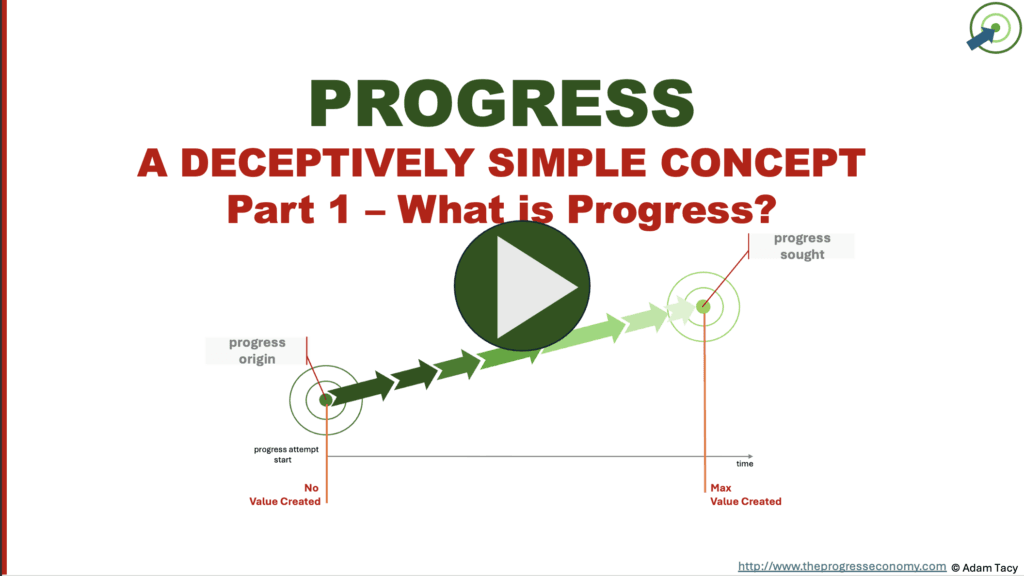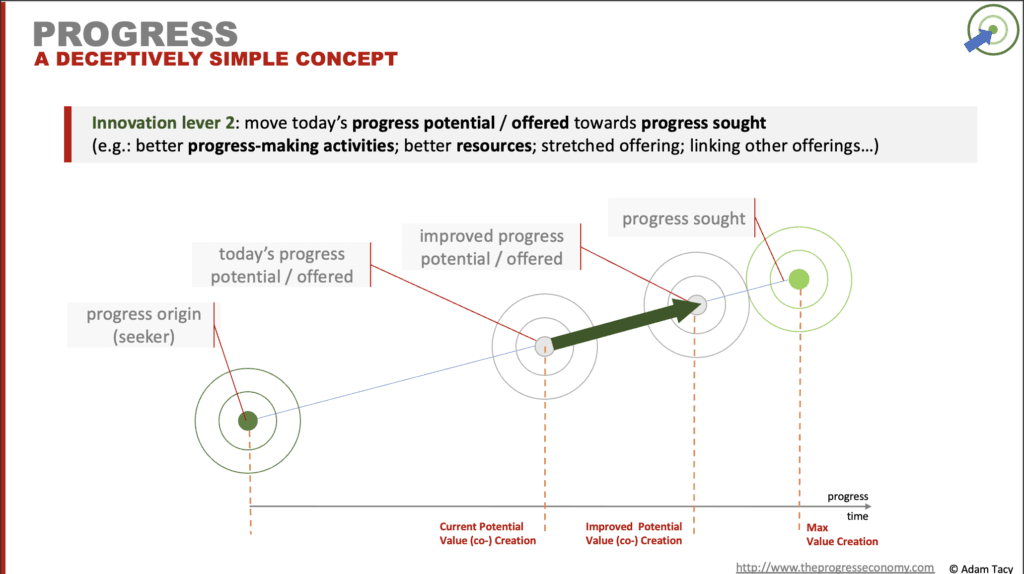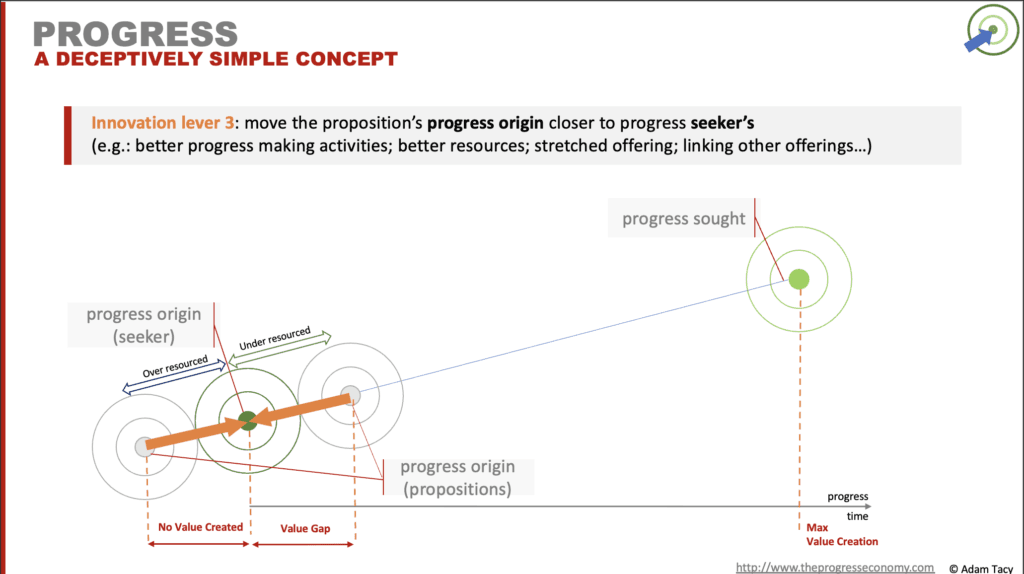redefine your business
discover how progress-first thinking
transforms how you sell, innovate and grow
The Problem:
Innovation isn’t delivering
Growth is stalling
Only 6% of executives are satisfied with their innovation initiatives
McKinsey
» you’re investing in innovation…but are you just performing innovation theatre?
» your teams are out there selling…but you’re missing growth expectations?
» something’s wrong…
The world is facing a decade of stagnation — the “Tepid 20s”.
International Monetary Fund
The Shift:
From value-first
To progress-first
few suppliers…are able to answer…How you define and measure value?
Anderson and Narus
» we don’t really want ‘value’…we want to get to more desirable states
» concept of value emerges from progress comparisons
» it’s time for a more insightful lens: enable progress
Progress: moving, over time, to a more desirable state
The Progress Economy
Progress: deceptively simple, deeply powerful
Learning a language, getting nourished, searching faster, getting fit, moving to another location, hanging up a picture, breaking cryptography,… understanding how a Progress Seeker (you and I) wants to get from where they are now to their more desirable state, and what holds them back, gives us powerful insights.

- framework for a deeper, more insightful, view into what seekers are trying to do and their challenges
- toolkit to systematically innovate and improve sales
- operating system for understanding execution
apply the progress levers » improve your innovation, sales and growth
Meet
the Actors

Seekers: always seeking to make progress, with everything in life.
But often has a progress hurdle: they may lack the resources needed to make progress
Everybody is a Progress Seeker (even Progress Helpers are looking to make progress in something)

Helpers: offer progress propositions (supplementary resources) to enable better progress.
They can be:
» a Seeker that has overcome the lack of resource
» an entity that has deliberately set out to find resources to help progress
» trained by another entity to help progress.

Externalities: embed societal safeguards into a Seekers progress journey.
We’re looking at you governments, associations, society!
Interesting
Case Studies
(these are currently likely just placeholders)
Self checkout – profit over progress
Progress thinking helps us understand why self checkouts are failing (and where they suceed) »
Enabling the circular economy
The circular economy will only take off once we change our view of value (as in the Progress Economy) »
Blue Ocean Strategy
Leveraging Blue Ocean Canvas to explore functional, non-functional and contextual progress and find blue oceans »
Next Steps..
Start innovating, successfully
- Innovation Problem
- Innovation in the Progress Economy
- Progress levers







